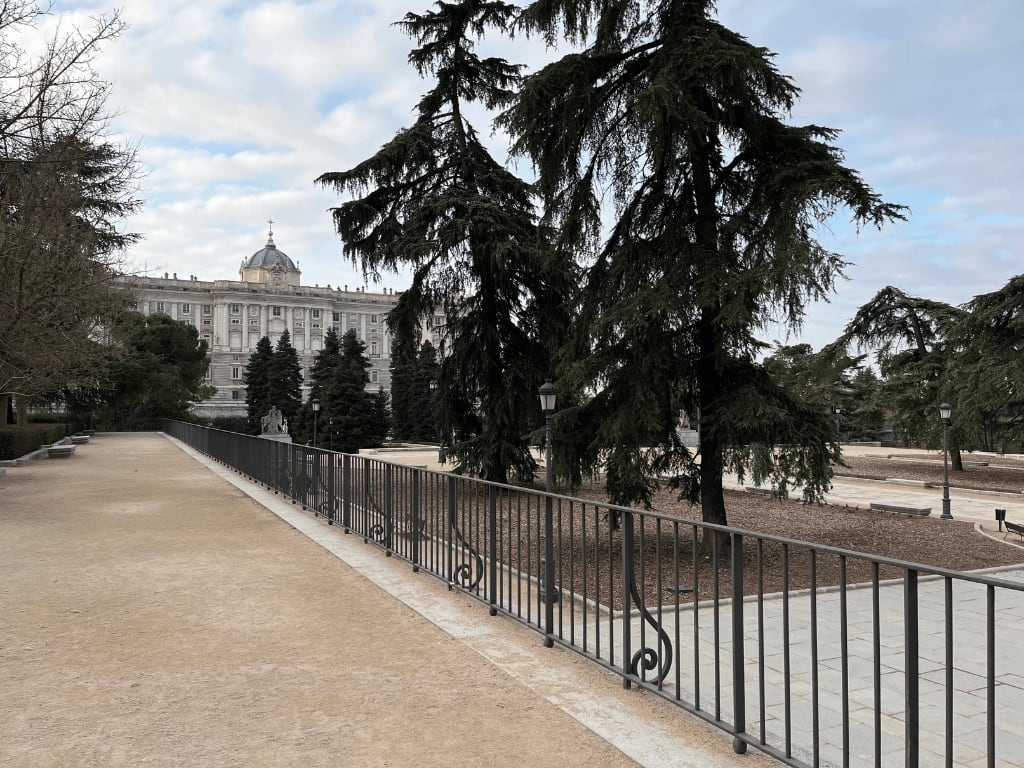33 Best Attractions in Spain Everyone Should Visit
September 6, 2023
Win a FREE Trip to Spain!
Exciting Announcement! For the first time, we're thrilled to offer exclusive trips to the heart of Spain - an experience like no other. This isn't your typical tourist journey; it's a unique opportunity to immerse yourself in authentic Spanish culture, alongside real locals and our passionate team.
But there's more! Simply by requesting information about this amazing trip, you'll be entered into a special draw to win a Fully Paid Trip to Spain for Two. And that's not all - everyone who inquires will receive an exclusive bonus gift, valued at $500, available only now.
Ready to Discover the Real Spain?Click Here ↑ to Request Information & Enter the Draw!
As a traveler myself, I understand your deep desire to explore the world’s wonders. With open arms, Spain welcomes its visitors with fantastic attractions, sceneries, and landscapes!
In this article, I’ll show you the 33 best attractions that deserve a special place on your bucket list. You’ll see that Spain’s charm is not just that it has tons of sites to go, but that each place is so diverse and holds history behind it.
Btw: Putting together a complete list of the best attractions is challenging… You’ll find the table of contents organized by categories, making it easier to browse.
So… this is your sign to stop delaying your decision to travel to Spain. After reading this, you will understand why this European country attracts so many people and even makes some stay!
Table of Contents ▼ ▶
Architectural Wonders
1. The Alhambra in Granada
World Heritage Site since 1984
The Alhambra in Granada is the largest and richest legacy of Muslim power in the Iberian Peninsula. It is also one of the most visited monuments in Spain and even in the world!
Initially, the place was simultaneously a fortress, palace, and small city. It includes The Nasrid Palaces, The Alcazaba, The Generalife, The Partal, and The Palace of Charles V.
Buy tickets as far in advance as possible, on the official website of the Alhambra or at the ticket office.
2. La Sagrada Familia in Barcelona
World Heritage Site since 1882
The Sagrada Familia is the symbol of the City of Barcelona par excellence. The construction of this temple began in 1882 with a neo-Gothic style. They gave the project to Gaudí a year later, who completely rethought it.
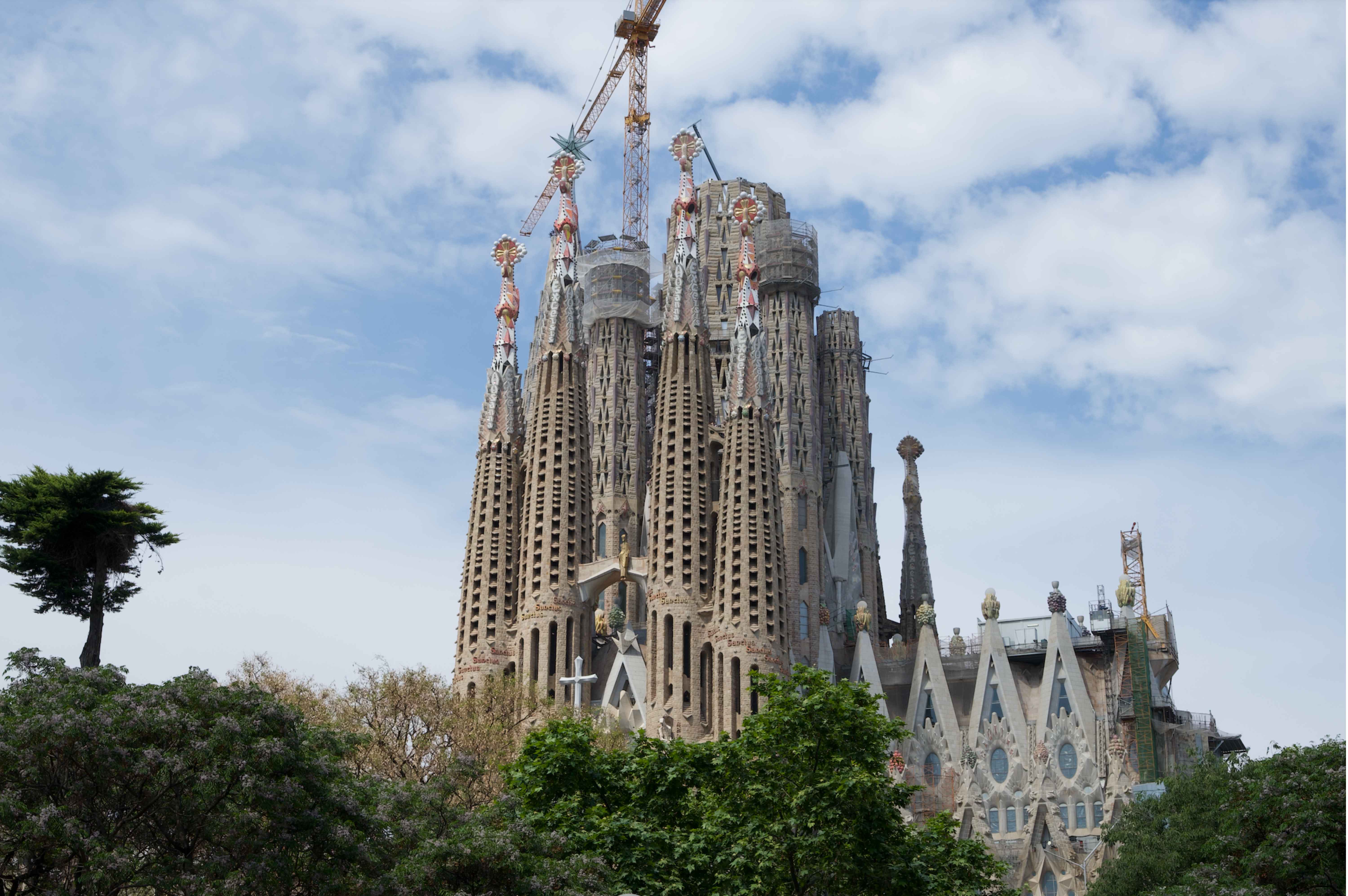
Sadly, Gaudí died in 1926 and left this masterpiece unfinished. Yet, thanks to the plans that remain, other artists and donors are continuing the project so it can be finished one day!
If I were you, I would go there early in the morning to avoid crowds. And get tickets in advance. Must-read for extra tips: 15 Best Tips & Tricks to Discover Barcelona like a Local
3. Mosque-Cathedral of Córdoba (Mezquita-Catedral de Córdoba)
World Heritage Site since 1984
The renowned Mosque-Cathedral of Córdoba is a powerful symbol of the Islamic West, representing the city’s essence and character shaped by the fusion of Muslim and Roman Catholic influences.
This monumental structure, originally a grand Arab mosque, experienced many alterations during the Christian years, especially in the 16th century when the Christian temple or Cathedral was integrated, showing Plateresque elements.
4. The City of Arts and Sciences (Ciudad de las Artes y las Ciencias) in Valencia
The City of Arts and Sciences in Valencia is a complex with unique design and architecture dedicated to scientific and cultural dissemination.
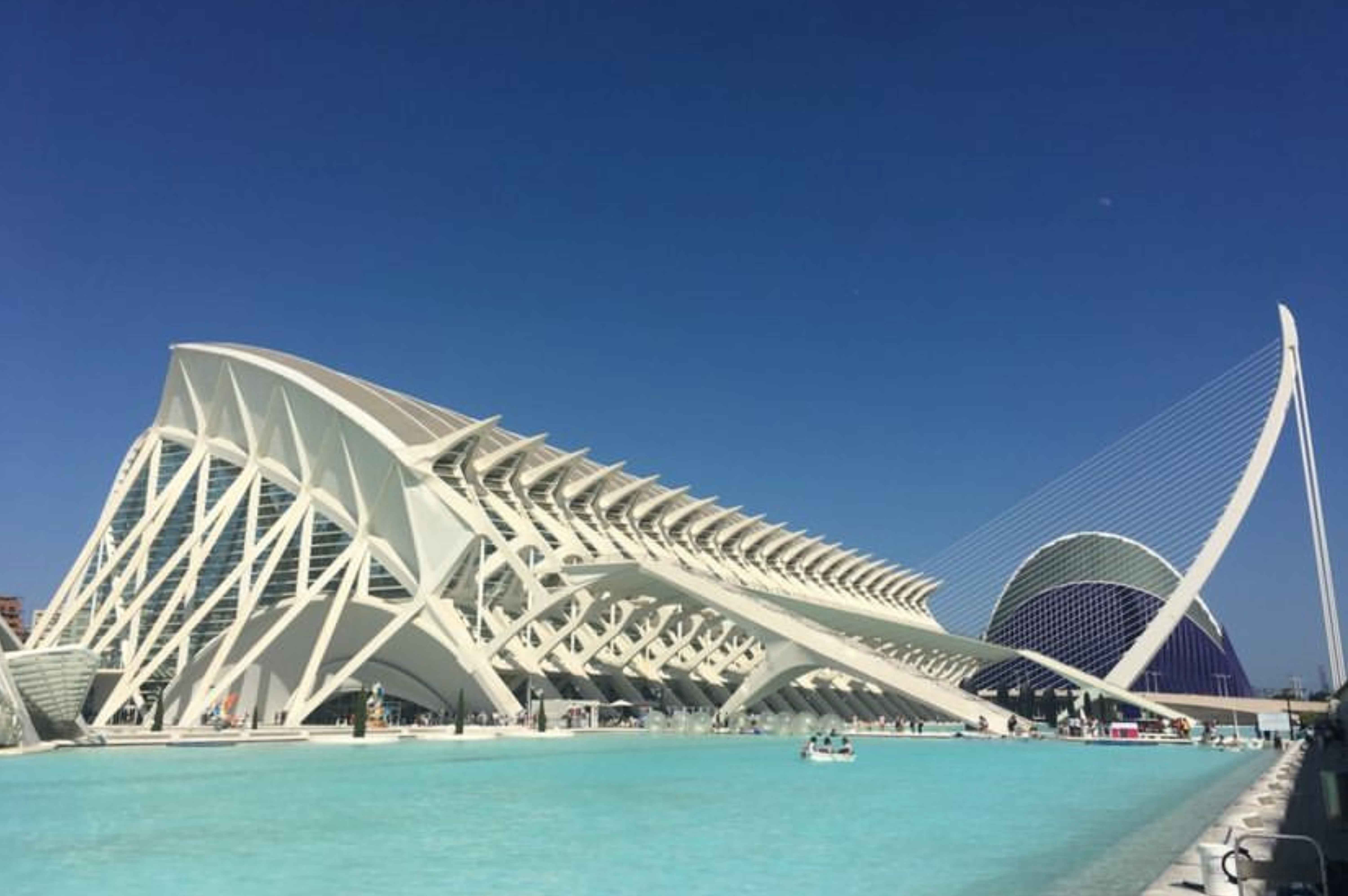
Besides being one of the 12 Marvels of Spain (I know!), it is Valencia’s most important modern tourist destination. It was inaugurated in 1998 and designed by the well-known architect Santiago Calatrava.
A visit to this place will exceed all your expectations; who knows if you stay for a few months! It happened to my fellow friend, listen to his experience on this podcast episode:
5. Park Güell in Barcelona
Designed by the iconic architect Gaudí, Park Güell is like a fairytale in real life, with its colorful mosaics, curvy structures, and stunning city views!
I promise it feels like you’ve entered a magical dream. Just make sure to arrive early or book tickets online to reserve your spot, as this popular attraction can get busy.
Also, relax! It’s a park. Feel free to bring snacks and enjoy a picnic. A visit usually takes roughly 3 hours.
6. Guggenheim Museum in Bilbao
From stunning architecture to impressive exhibits, the museum is a must-see attraction for anyone visiting the North of Spain. It has an outstanding collection of contemporary art, and only the building itself is worth the visit, as it was designed by Frank Gehry.
Guggenheim Museum is inscribed on the UNESCO World Heritage List as part of the 20th-Century Architecture of Frank Lloyd Wright. (The collection of Wright sites means the first modern architecture designation in the country on the list.)
Buy tickets in advance. Get them on their website. Also, part of the exhibition is outside, so visit with nice weather conditions.
Historical & Cultural Wonders
7. The Cathedral, Alcázar, and Archive of the Indies in Seville
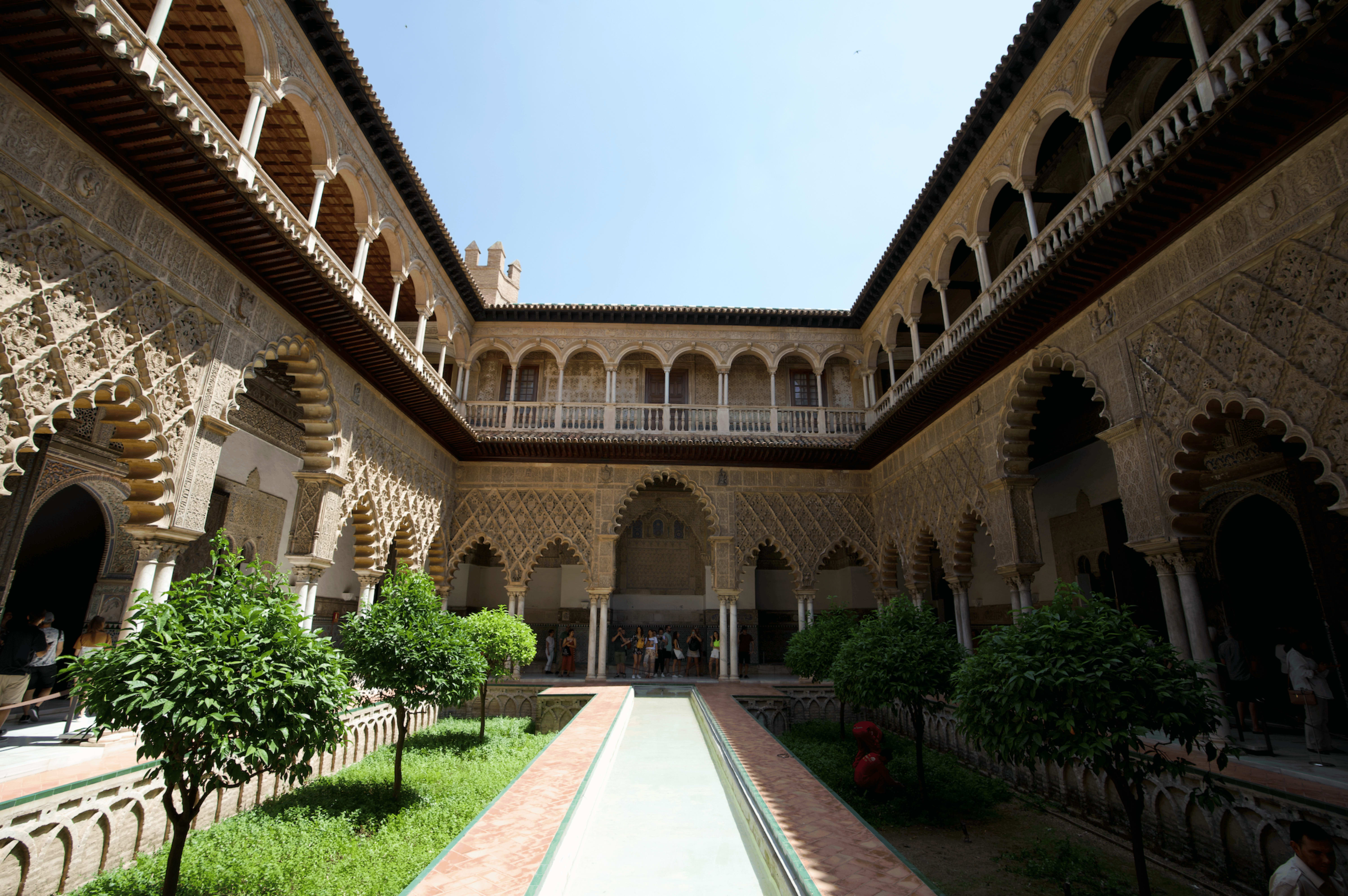
Seville’s historic trio, the Cathedral, Alcázar, and Archive of the Indies, are UNESCO World Heritage Sites.
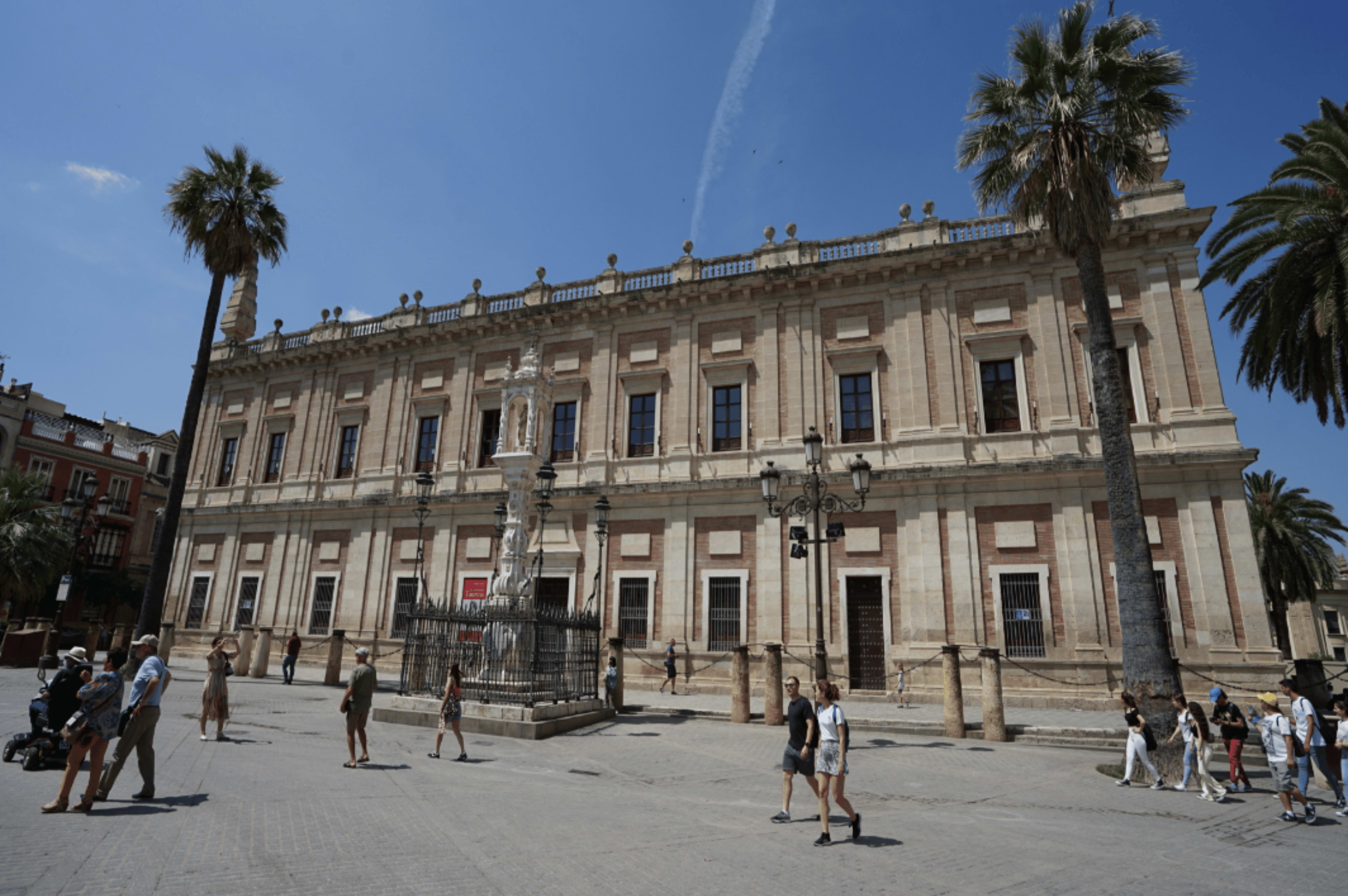
The Cathedral is the world’s largest Gothic Cathedral; the Alcázar is an enchanting palace showcasing Múdejar, Gothic, Renaissance, and Baroque styles, while the Archive of the Indies preserves invaluable colonial-era documents.
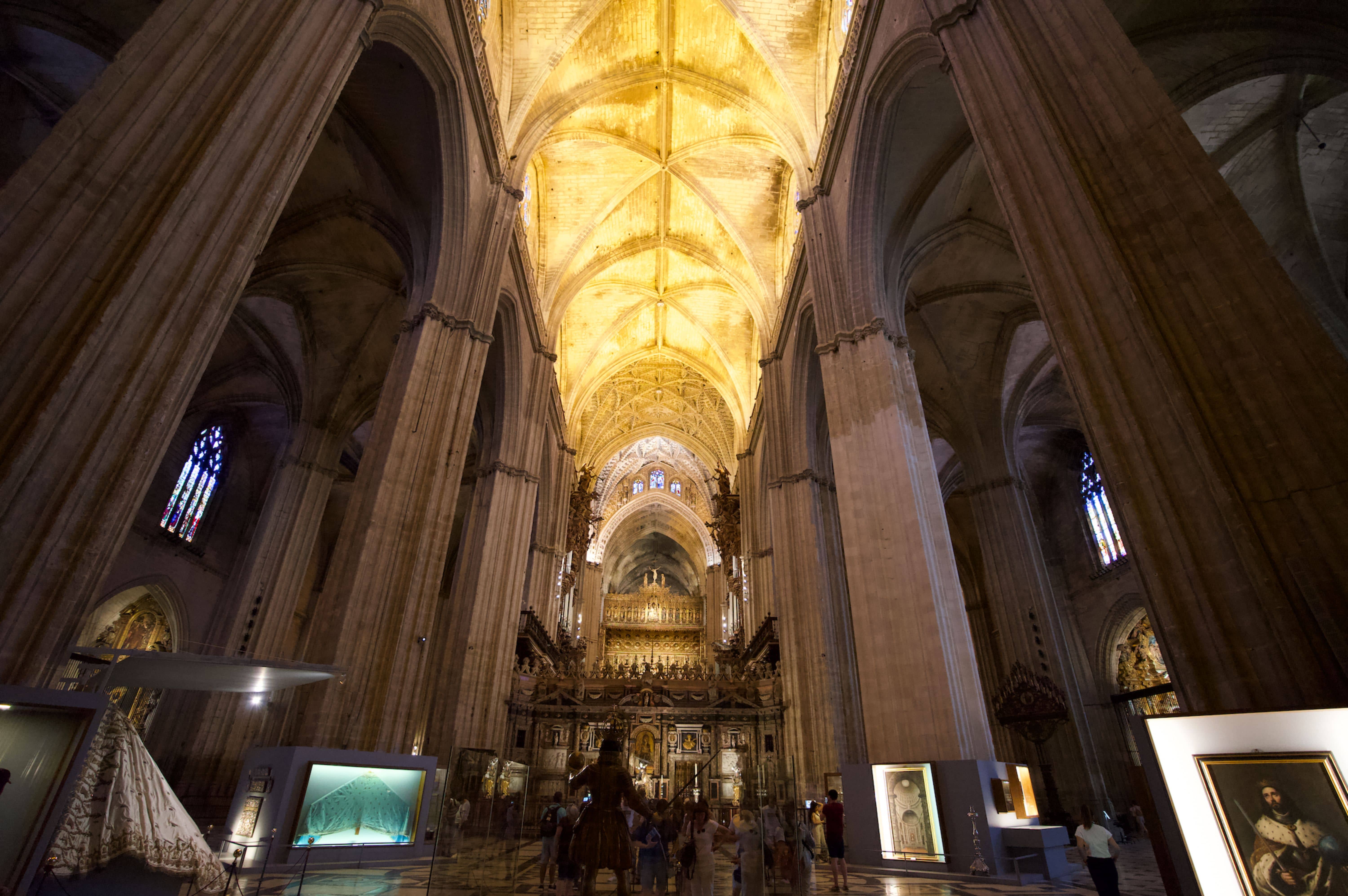
8. The Prado Museum
With more than 3 million annual visitors, The Prado Museum is a must-see attraction in the city. It is the most famous museum in the country’s capital and a worldwide reference.

The Prado Museum houses the most extensive collection of Spanish paintings, which makes it an art lover’s dream. It has the most famous paintings by Velázquez (Las Meninas), El Greco, Goya (Third of May 1808), Titian, Rubens, and Bosch.
Free from Monday to Saturday, from 6 pm to 8 pm, and on Sundays and holidays, from 5 pm to 7 pm.
9. Alcazaba in Málaga
The Alcazaba of Málaga is one of Spain’s most important preserved fortresses and defensive enclosures.
It fulfilled military and government functions in the city in the medieval period as it locates in front of the sea.
10. The Royal Palace
The Royal Palace of Madrid, also called the Palacio de Oriente, is the largest in Western Europe and one of the largest in the world!
It was established as the Spanish kings’ residence in 1764 with Charles III. Today, it is used exclusively for receptions, ceremonies, and official acts since the kings of Spain reside in the Palacio de la Zarzuela.
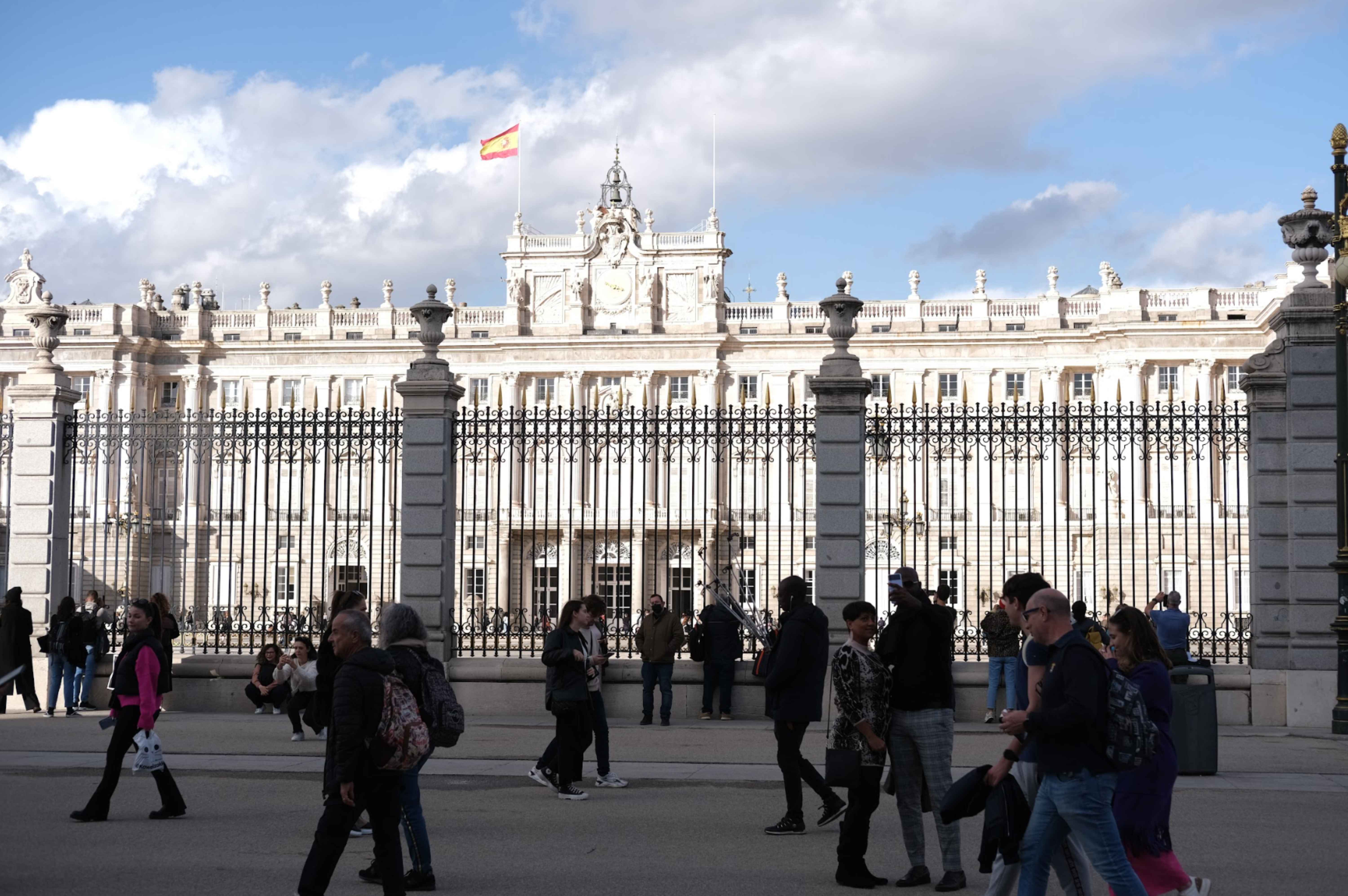
The visit includes entrance to the official halls, the Royal Armory (to see armor, shields, and weapons of all kinds, constituting one of the most important collections in the world), and the Royal Pharmacy.
The Royal Palace is usually the first visit we recommend in our Madrid Itinerary since it’s a great starting point: How to Get Around Madrid + 8 Tips I Wish Someone Told Me
11. Historic City of Toledo
Toledo has been a UNESCO World Heritage Site since 1986. It sits by the Tagus River in a very unique place.
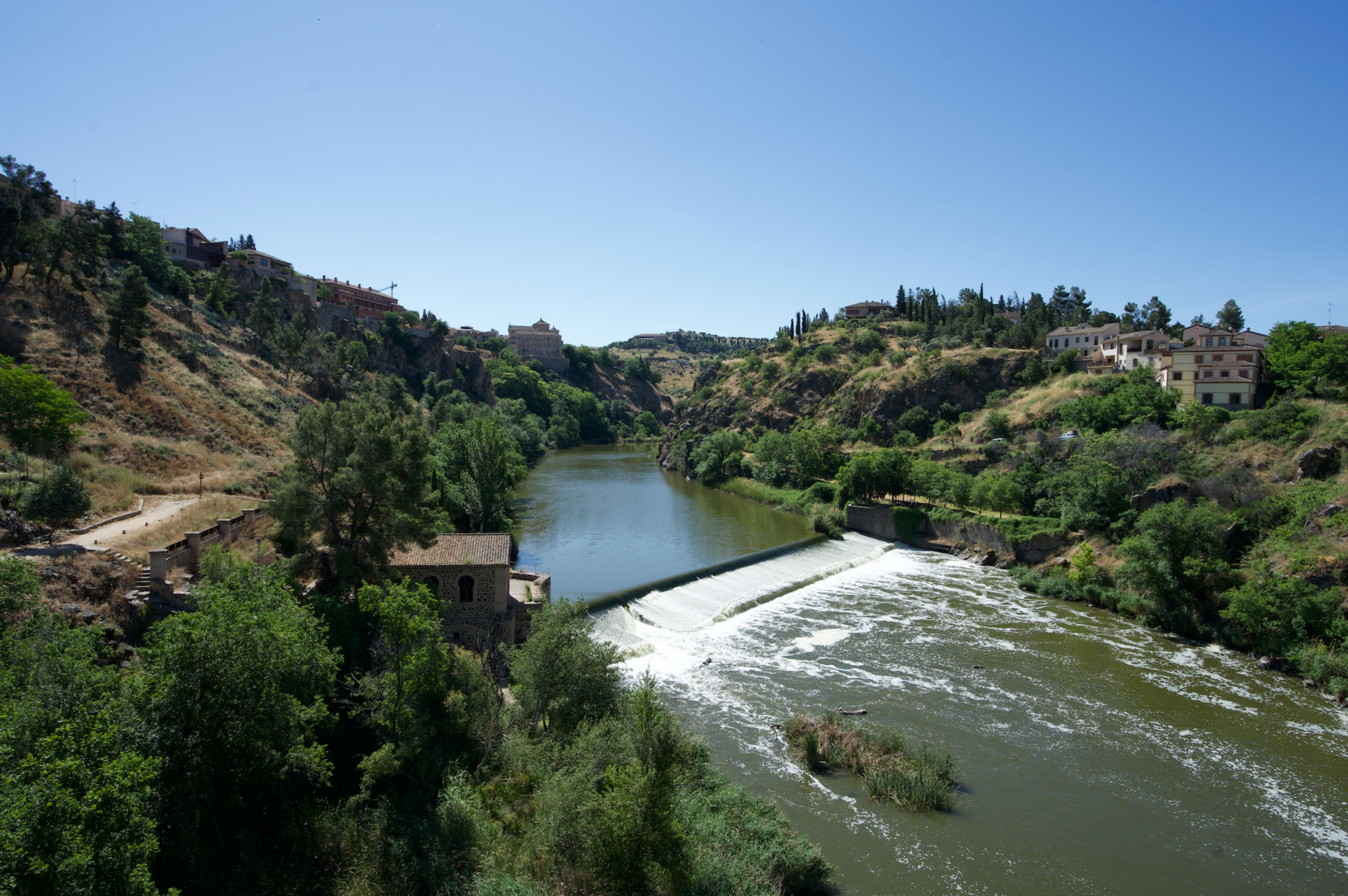
They call it the “City of the Three Cultures” because Christians, Muslims, and Jews have left their mark here.
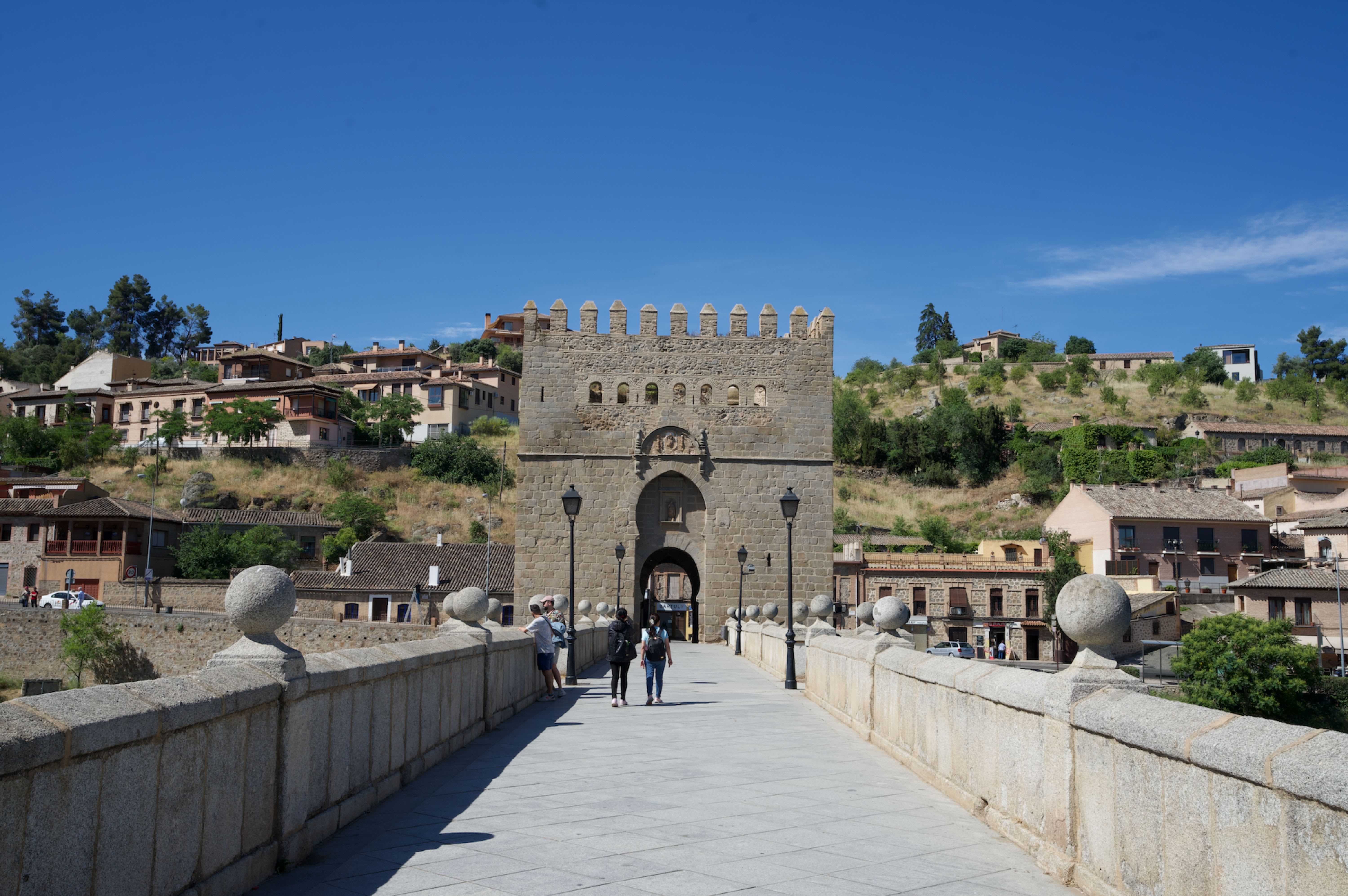
It’s been Roman, Visigothic, a Moorish fortress, and had great significance during the reign of Charles V. So, it’s like a treasure trunk of 2,000+ years of history!
12. The Cathedral of Santa María in Salamanca
The Cathedral of Santa María, known as the Old Cathedral, is one of the two cathedrals in Salamanca.

It has a Romanesque and Gothic style, and its construction began in the first third of the 12th century and was completed at the end of the 14th century.
13. Cathedral of Santiago de Compostela (Catedral de Santiago de Compostela)
Out of all the cathedrals in the world, La Catedral de Santiago is extra special. It’s where we keep the relics of one of Jesus’ 12 apostles, Santiago the Greater. Also, it is the most outstanding work of Romanesque art in Spain.
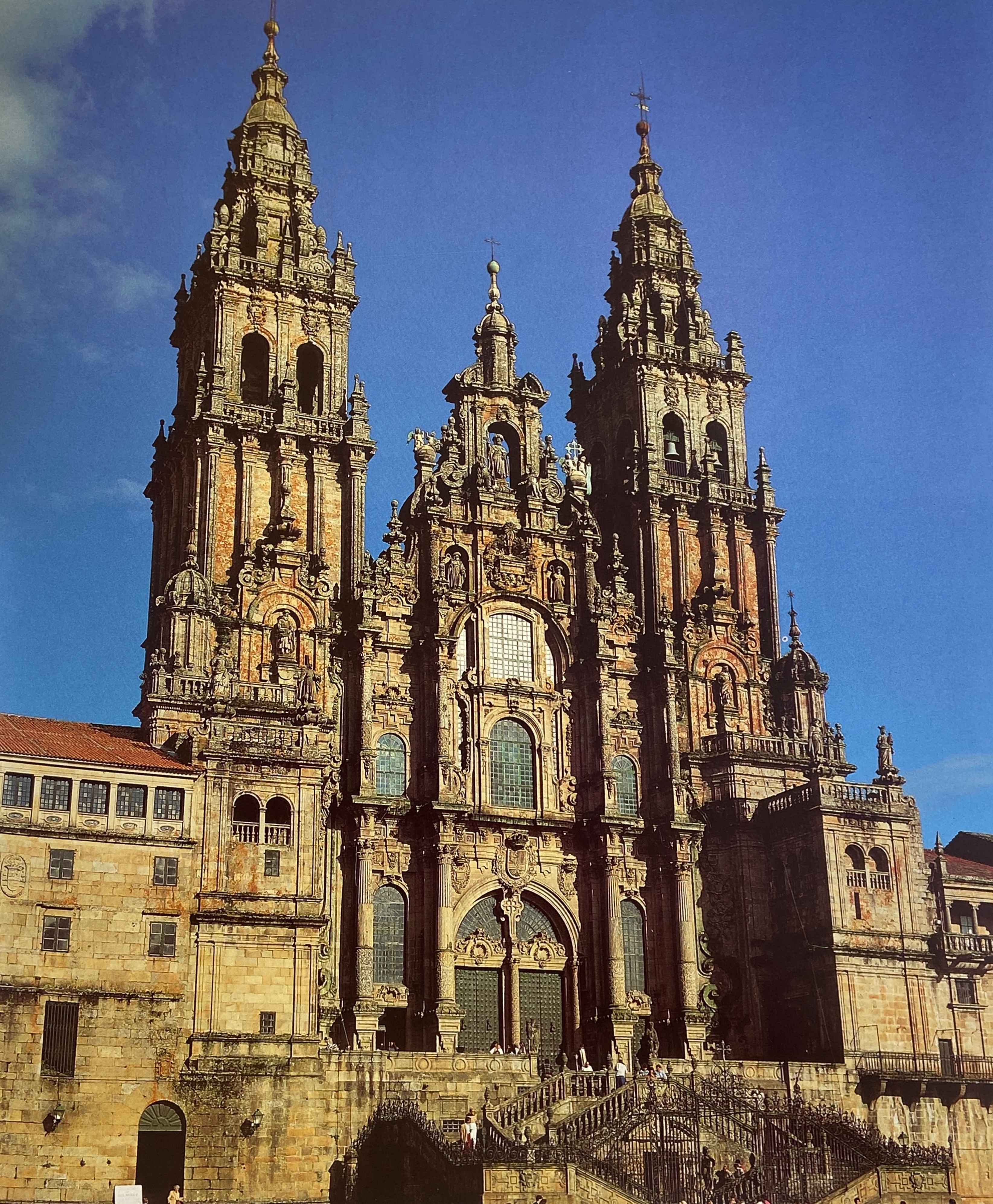
Moreover, Pilgrims from all over the world come together in a route to complete the Camino de Santiago, reaching the Cathedral.
14. The Segovia Aqueduct
The Segovia Aqueduct is said to be “a marvel of ancient engineering,” In addition to being the best-preserved work of Roman civil engineering in Spain, it is the most symbolic monument of the city.
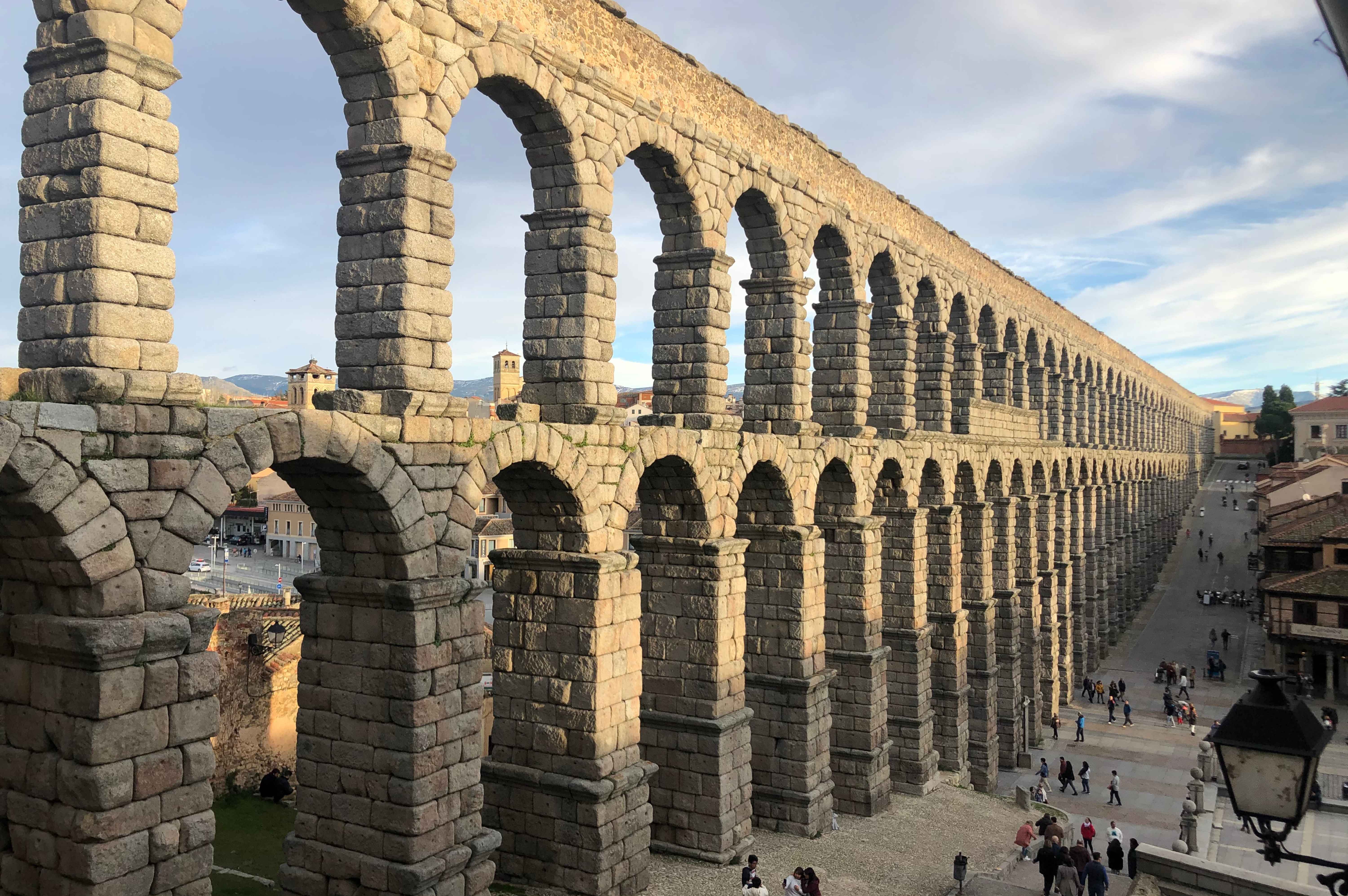
In 1985, UNESCO declared the old part of the city and the aqueduct a World Heritage Site, a tourist must-see attraction.
15. The Walls of Ávila (La Muralla de Ávila)
The Walls of Ávila are an example of Romanesque military architecture and are the city’s main monument.
The wall was built with a military purpose in case of invasion since it is located in the highest part of the city.
It was built from 1090 to 1099 and has 33 hectares inside and 2,516 m length from its origin.
16. Historic City of Cáceres
World Heritage Site by UNESCO in 1986
You’ll find the third-best-preserved medieval complex in the historic center of Europe, right after Prague and Tallinn.
It’s like a time capsule where the ancient Roman foundations hide under Muslim, Jewish, and Christian history layers.
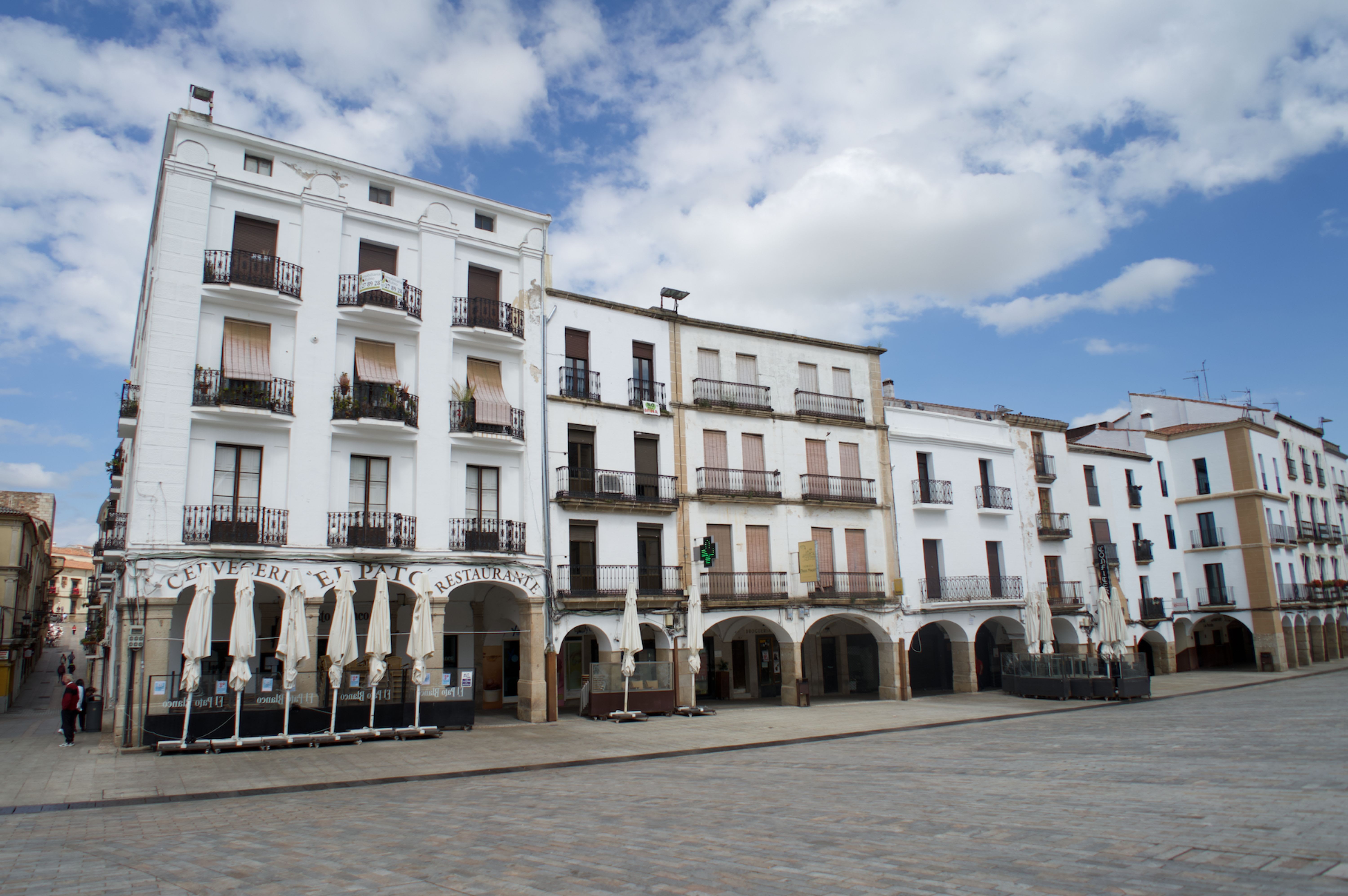
A visit to Cáceres will take you on a unique journey to understand Spain’s rich cultural history, making it an iconic attraction for travelers.
Looks familiar? Games of Thrones’s final season was filmed in Cáceres.
17. The Cathedral of Santa María de Burgos (La Catedral de Burgos)
The Cathedral of Santa María de Burgos is a temple dedicated to the Virgin Mary, and it is one of the masterpieces of Spanish Gothic and the first that represents classical Gothic architecture in Spain.

It began construction in the 13th century and was completed in the 15th and 16th centuries. Also, it has one of the largest collections of masterpieces from the period worldwide!
18. The Roman Theater in Mérida (El Teatro Romano de Mérida)
A hidden gem!
The Roman theater is the most representative element of the Monumental Complex of Mérida. In the same area is the Anfiteatro, where they used to have those epic gladiator battles and animal fights that we see in movies!
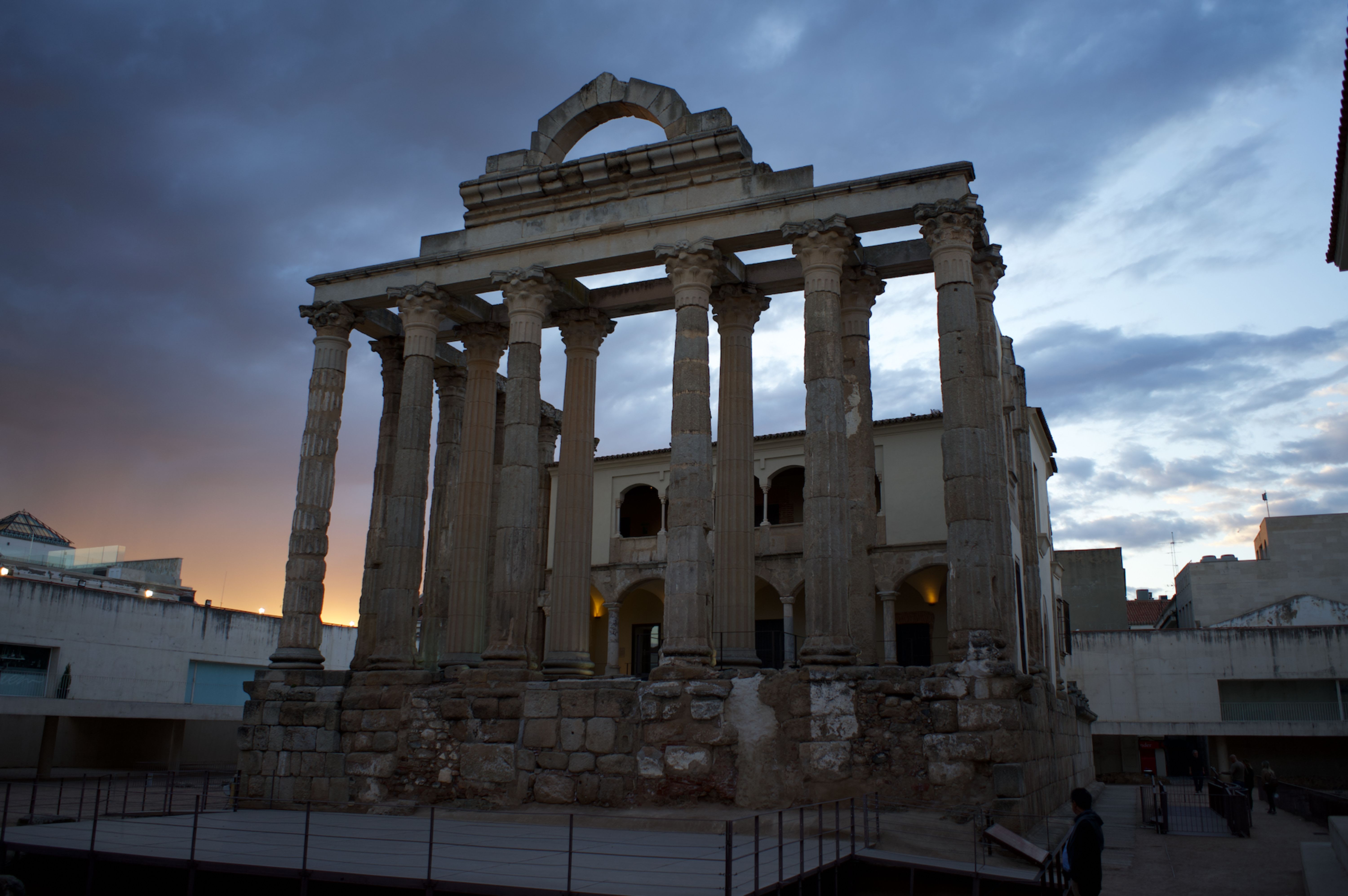
It is exceptionally well-preserved, and, like in Segovia, it is a testament to Roman engineering and architecture. This spot was like the Roman Empire’s entertainment hub.
It’s not surprising that it holds such a key part of Mérida’s rich heritage.
19. Casas Colgadas de Cuenca
“The town of the hanging houses”
Cuenca is famous for its iconic Hanging Houses monument, the main tourist attraction. We’re talking about centuries-old houses perched on a rocky cliff and wooden balconies that somehow remain suspended over a pretty valley.
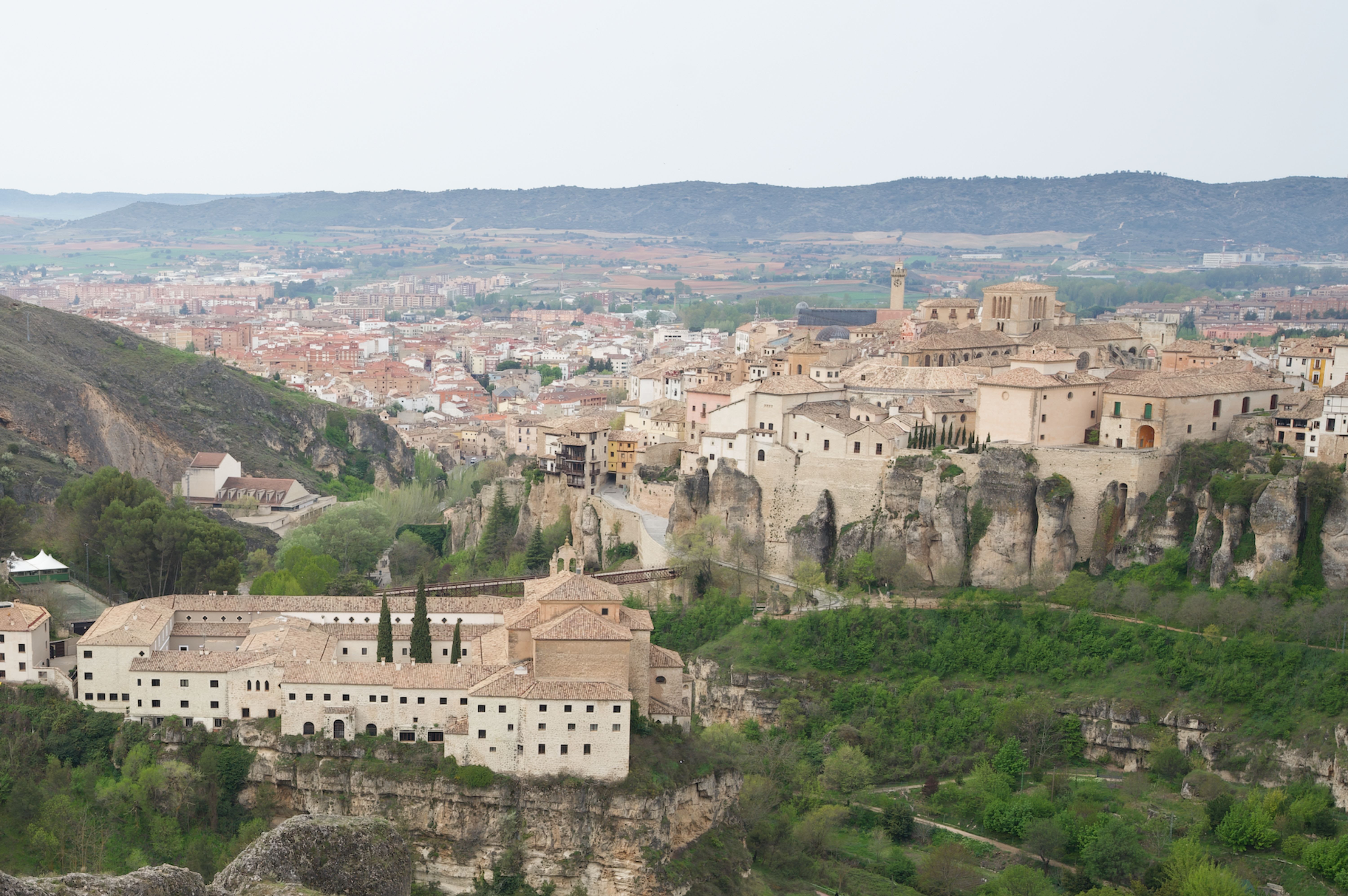
Also, I highly recommend everyone to visit it since it’s a UNESCO World Heritage Site, and the drive to Cuenca from Zaragoza is very underrated. You can appreciate the change from flat, dry lands to cliffs to tall trees. A real beauty!
Natural Beauty
20. Teide National Park in Tenerife
The renowned Teide National Park is the most visited in Spain. Its peak measures 3,718 meters, making it the highest mountain in our country.
“Its landscape is very similar to the moon. It’s beautiful! The last time I climbed it with my wife and her family from “Montaña Blanca,” it was a unique experience! We saw the sunrise from the top; it was amazing! We plan to do it again this year, but I’ll take the long route from the beach to the top this time. Wish us luck! A chairlift can take you to the top if you don’t want to walk that much. Ohh! And if you are a big fan of stars, the Teide has one of the most important star observatories in the world!”
- Carlos, 31 years old, from Madrid.
21. Doñana in Huelva
World Heritage Site since 1994
Doñana is in Andalucia and occupies the right bank of the Guadalquivir River at its mouth in the Atlantic Ocean.
Today, it is famous for its incredible natural diversities, lagoons, marshlands, fixed and mobile dunes, scrub woodland, and maquis.
It’s said that the missing Atlantis is located in this National Park. Even Plato, the Greek Philosopher, described the island in one of his dialogues. Read the full story: The Ancient Spanish Lost City: Is the Missing Atlantis in Andalucia
22. Drach Caves (Cuevas del Drach)
The Drach Caves, located in Porto Cristo in Manacor, are one of the main tourist attractions in Mallorca. I promise you the pictures don’t do justice.
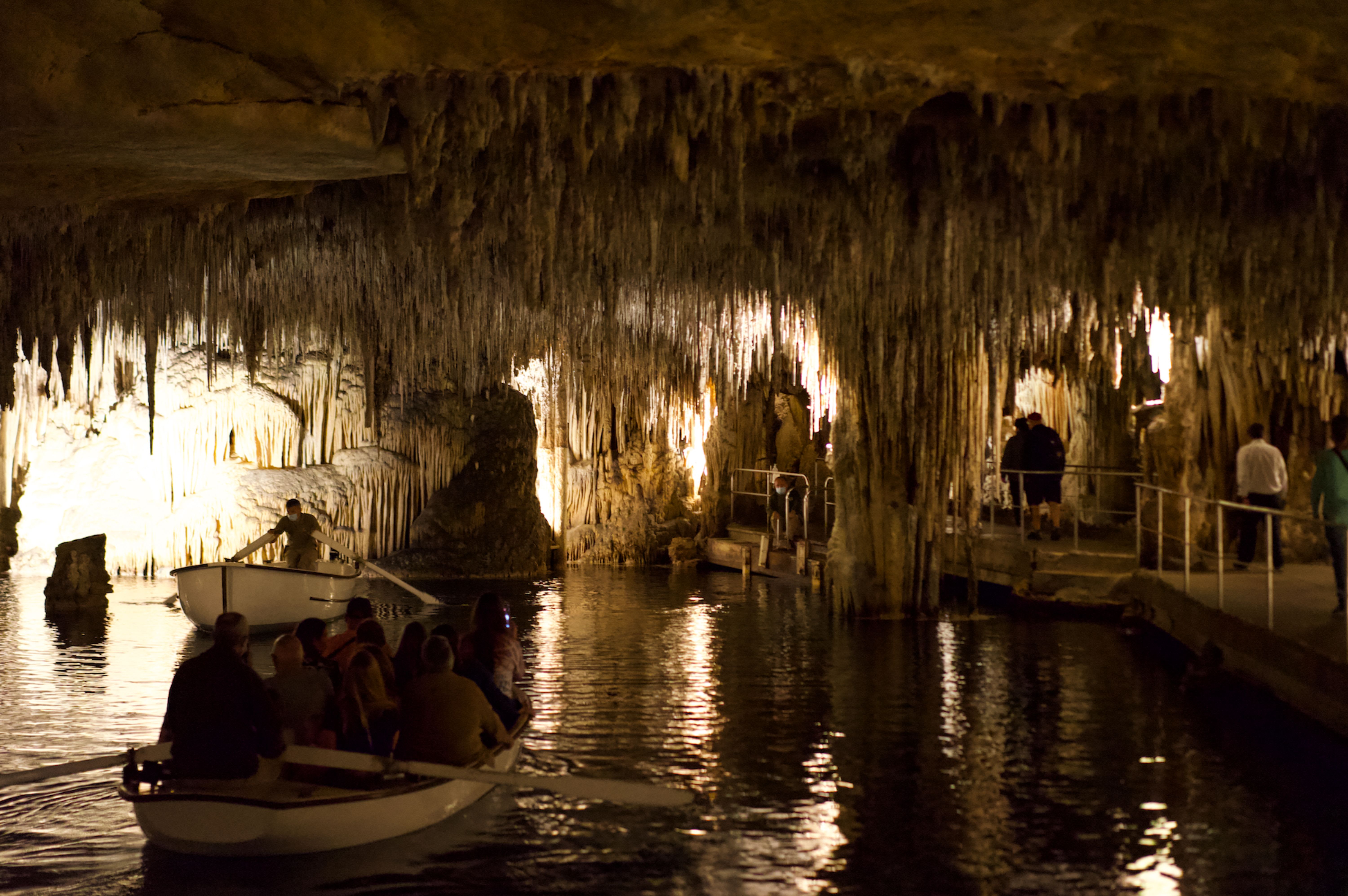
It is one of the most extensive underground caves in the world, so it is well worth a visit since there is a lot to see.
23. Picos de Europa
Picos de Europa is distributed among 11 villages and is Spain’s only inhabited Natural Park.
It is one of my favorite landscapes, where you can hike among peaks (there are more than 30 self-guided routes), lakes, and rivers, eat rich gastronomy, visit charming villages, and plan panoramic routes by car.
24. Montserrat in Catalonia
Montserrat is a multi-peaked mountain range near Barcelona; it takes an hour by car to get there. Booking a tour to Montserrat is booking a unique experience.
The mountain is known as the site of the Benedictine abbey, Santa Maria de Montserrat, which hosts the Virgin of Montserrat sanctuary. On top of that, you will ride the funicular railway to the Lookout of Saint Joan, which is almost 1000 meters above sea level!
25. Sierra Nevada in Andalucia
Declared a Biosphere Reserve by UNESCO in 1986
Sierra Nevada is a botanical paradise with a vascular flora with over 2100 cataloged species.
Also, it is an incredible winter destination since Sierra Nevada is a crucial ski resort with 126 kilometers of slopes. During spring, it’s an ideal place for trekking.
26. The Catalan Pyrenees
The Pyrenees? Oh yeah, they’re a real gem! Thousands of tourists go there every year since it is a wild, unexploited area and not too touristy.
There are few all-year routes between France and Spain, so you can quickly get far from the crowds, unlike other European mountain ranges.
27. Caves of Altamira in Cantabria
World Heritage Site in 1985
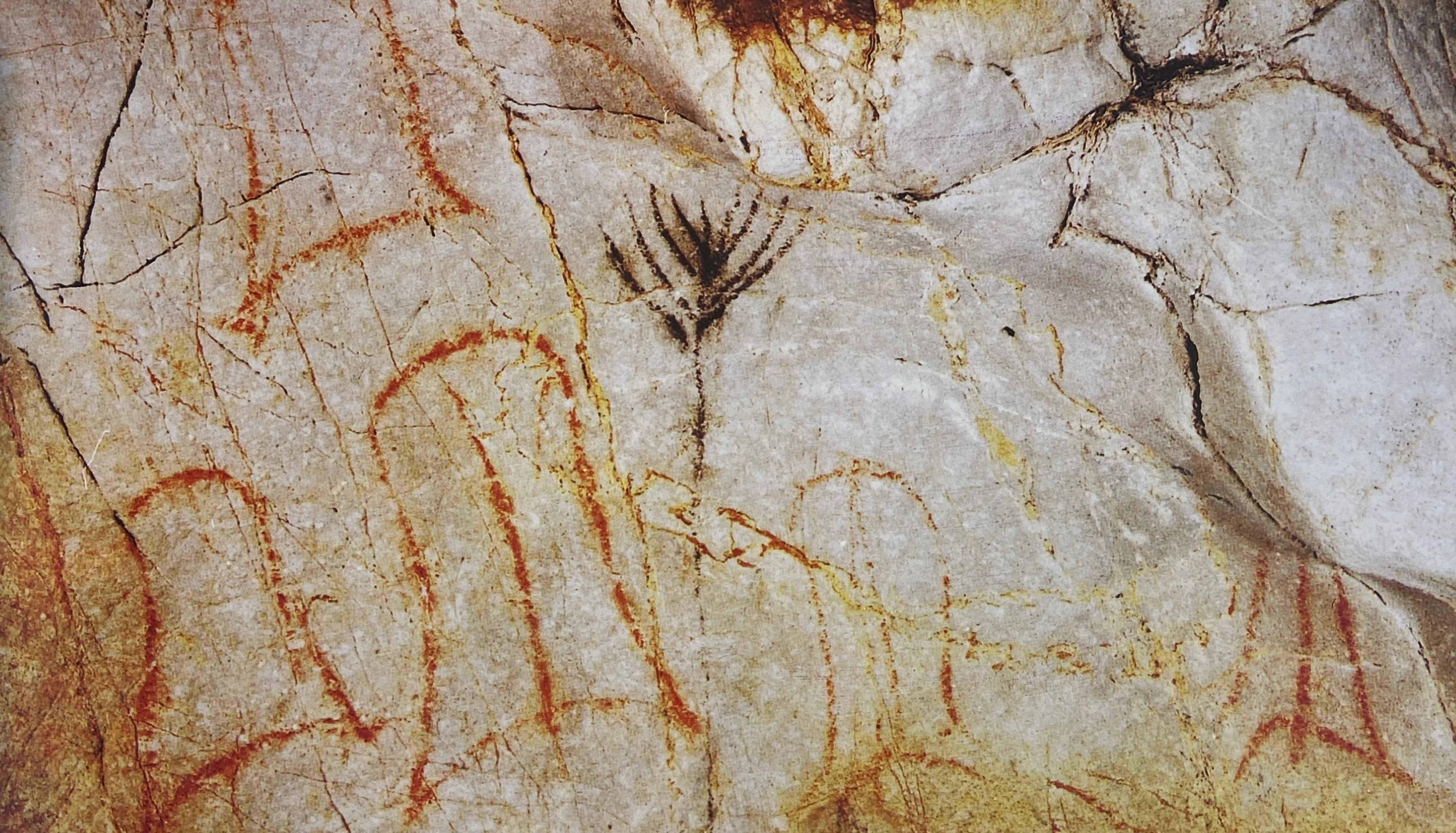
Did you know that this was the first place in the world where the existence of Upper Paleolithic Rock Art was identified?
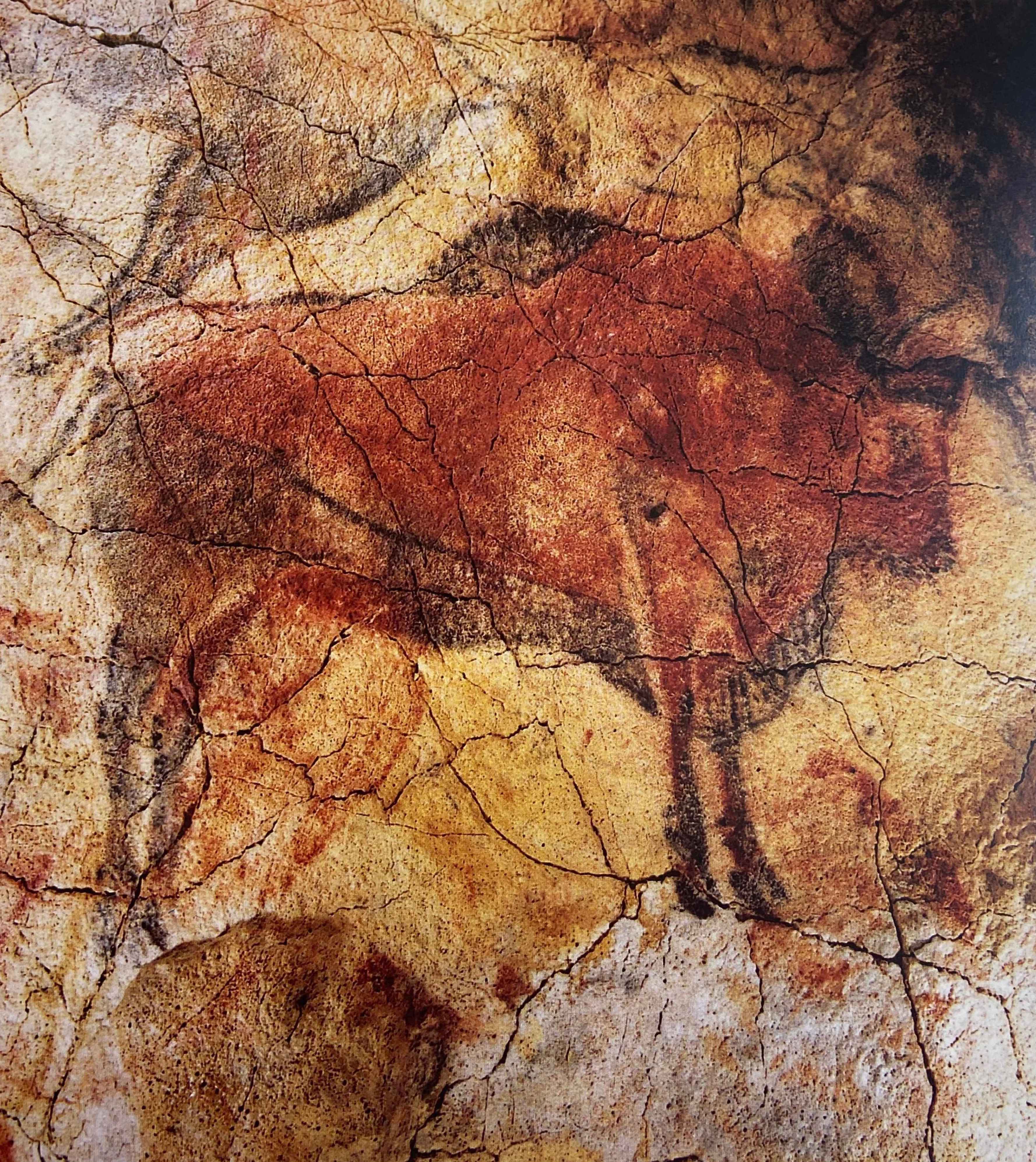
The cave of Altamira is about 270 meters long. Inside, you will see paintings of animals everywhere, especially species already extinct in Spain and Europe. (Read more)
28. Paradisiac Islands
One of the most iconic tourist attractions is the Spanish beaches in the Canary and the Balearic Islands… Besides having the ideal climate, their natural beauty and breathtaking landscapes are impressive.
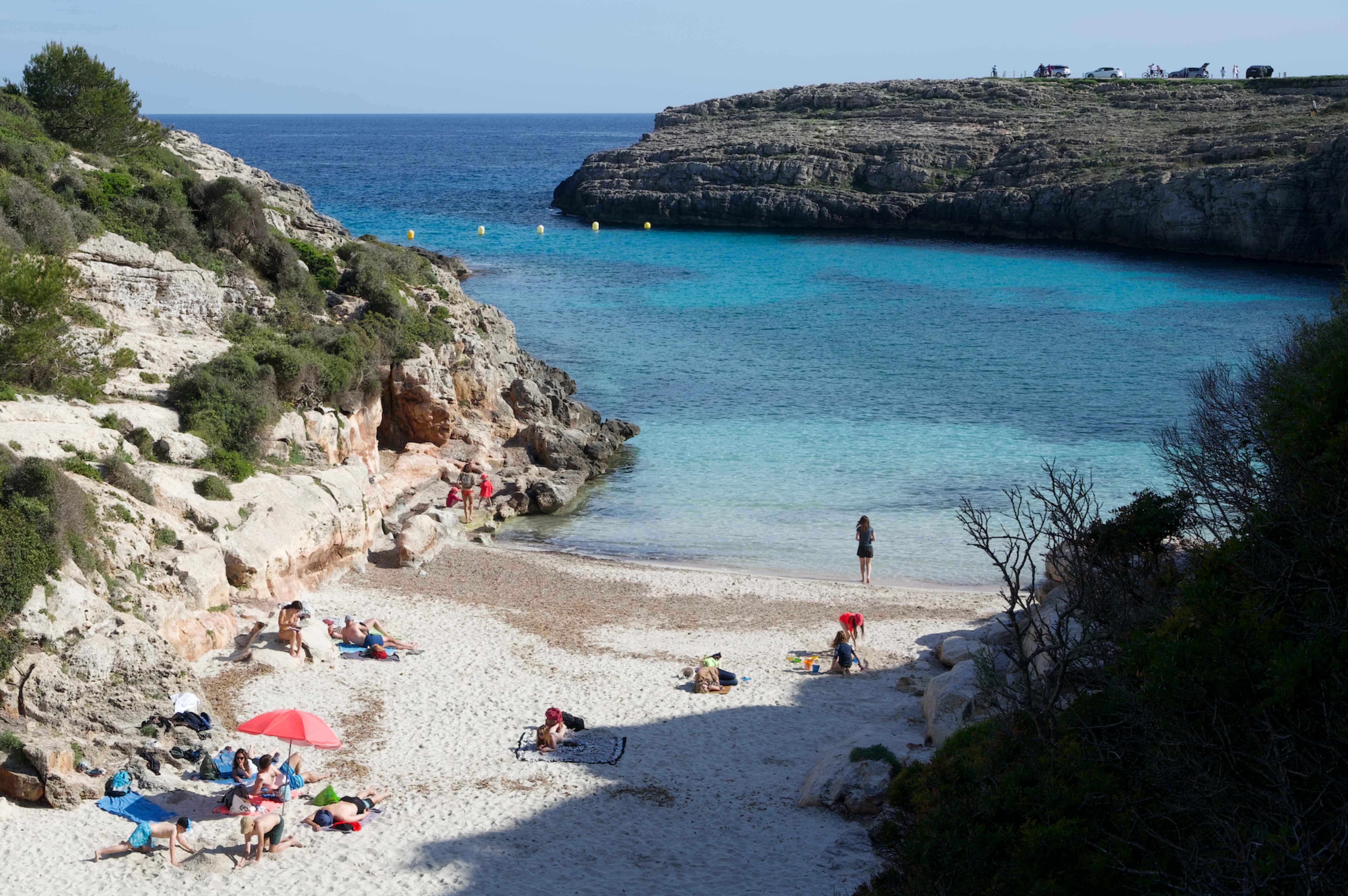
You’ve probably heard of Mallorca and Ibiza, known for stunning white sandy beaches and crystal-clear waters. But there are many other cities to escape and have fun in the sun!
Find out the best ones in this article: The 15 Magical Islands in Spain to Visit Once in a Lifetime
4. Culinary Experiences
29. La Boqueria Market
Since 1840, the energetic Boqueria Market has been a labyrinth with more than 300 stalls offering all kinds of typical products of the gastronomy of Barcelona.
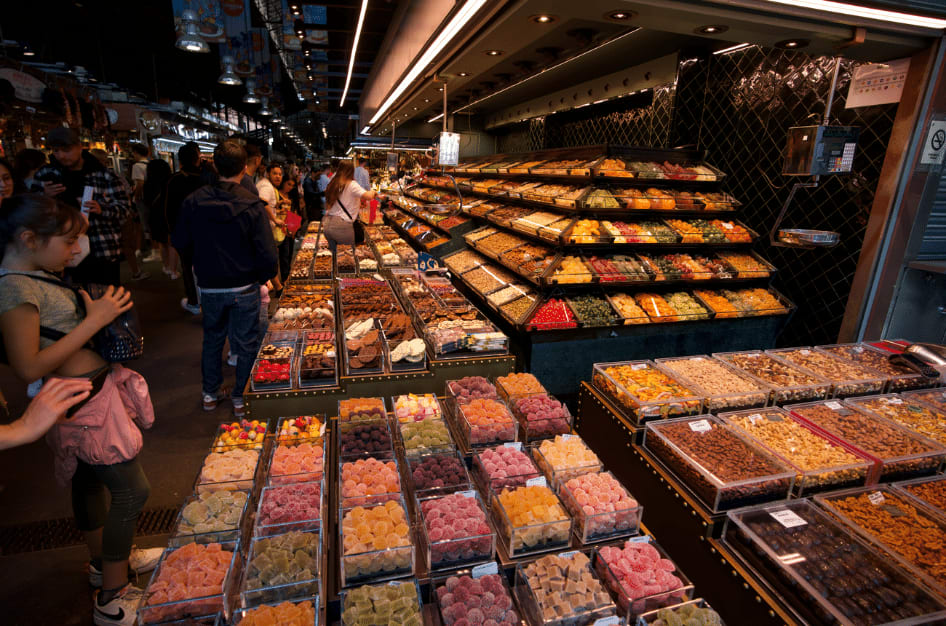
In this attraction, you will find various fruits and vegetables, fish and seafood, meat, preserves, vegetables, cheeses, and other local products.
Try the octopus marinated in herb oil and paprika from Boqueria bar.
30. San Miguel Market
Mercado San Miguel is the most popular market in Madrid. Visited by over 10 million people yearly, this market is famous for its gastronomic offer, which blends the concepts of a traditional market with high-end tapas and drinks such as beer and wine.
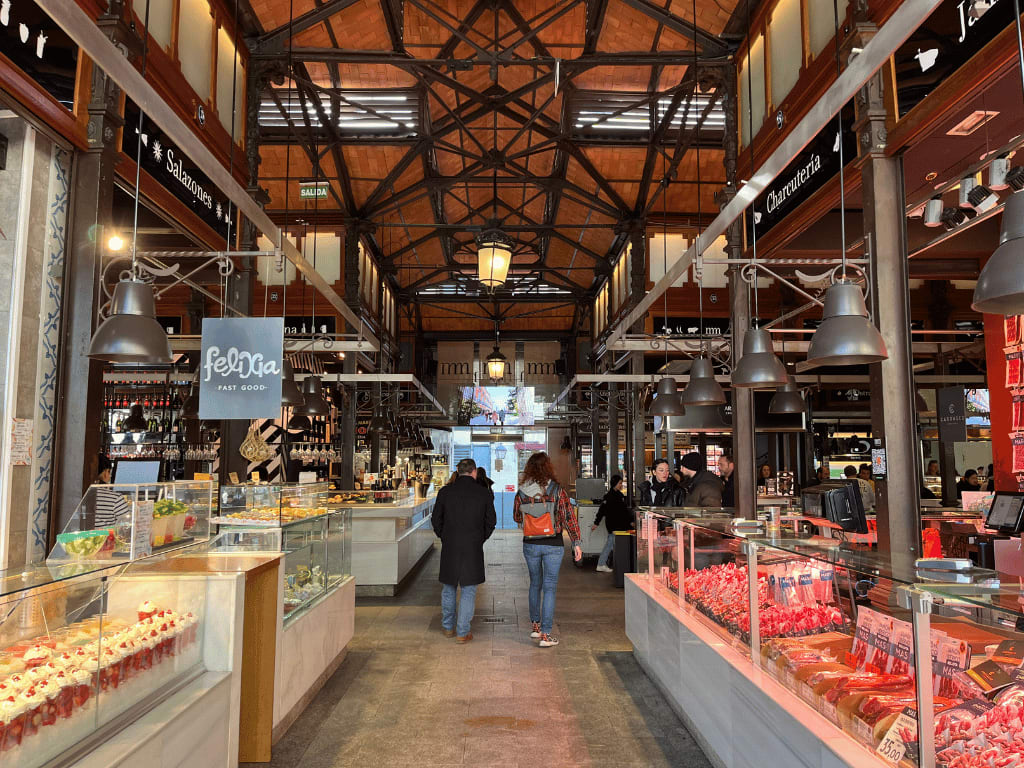
Wait, you HAVE to stop by this place and try the croquetas! They’re amazing.

31. Valencian Paella
Is Valencian Paella considered an attraction? Yes, and it is one of the biggest ones that Valencia has to offer its visitors since it’s well-known worldwide and represents the stereotype of the Spanish Gastronomy. So, yeah… it is an attraction.
Moreover, it was declared an Asset of Cultural Interest in 2021.
If you want to know the ingredients of an authentic Paella, watch this video:

32. La Rioja Wine Region
What crosses your mind when you think of Spain?
And why did you think about wine?
Exactly! Spain is renowned worldwide as one of the greatest wine producers ever. That’s why wine enthusiasts visit Spain yearly to have incredible experiences.
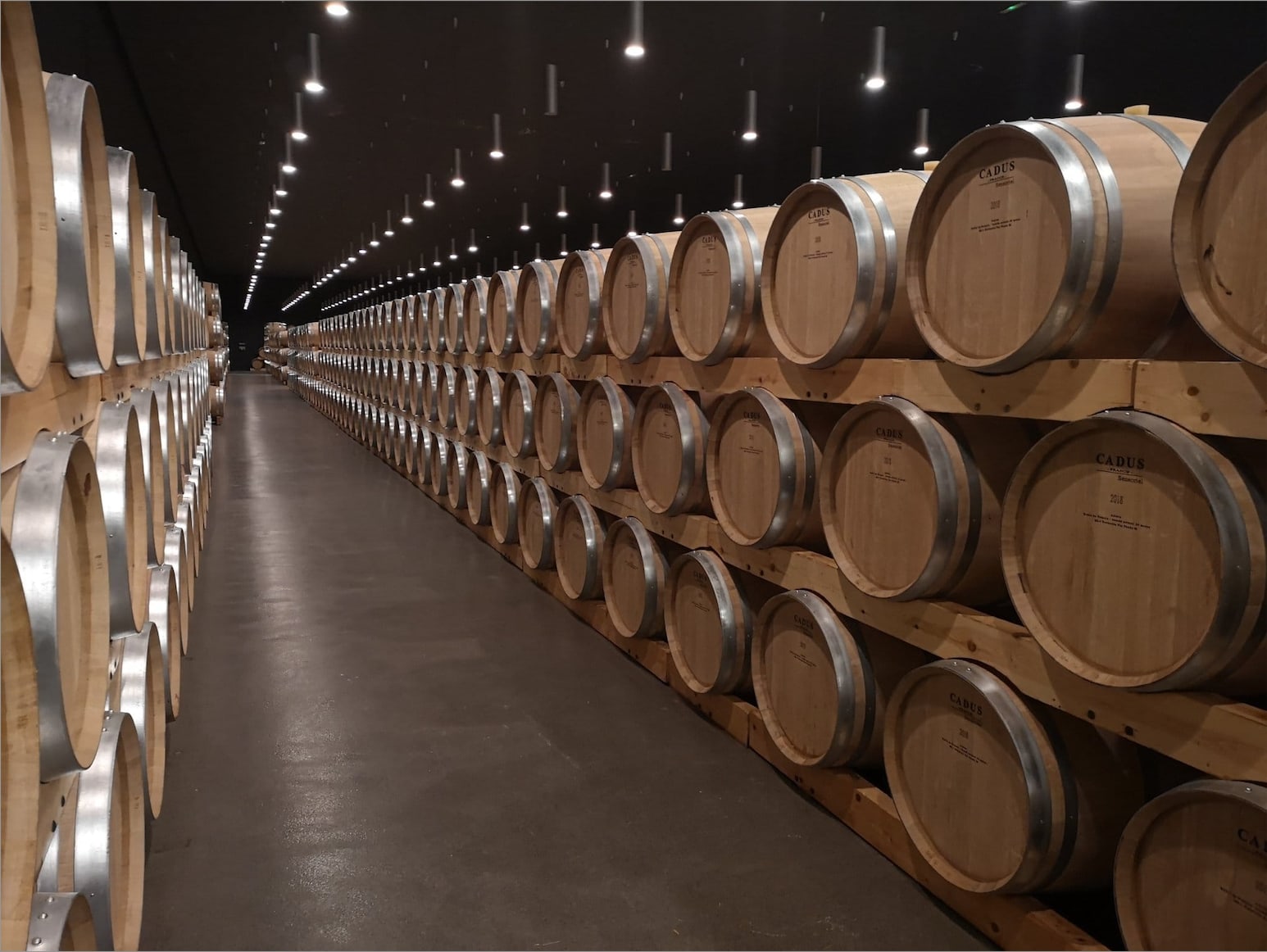
Specifically, there’s La Rioja, a designated origin region famous for its most refined wines, perfect for the most discerning palates: Spanish Vineyards: Insider’s Guide to the Best Wine Tours
Moreover, you’ll find culturally rich attractions in the region, like the Churches in San Millán de la Cogolla, Yuso Monastery, the Co-Cathedral of Santa María de La Redonda, and more.
33. San Sebastián Gastronomy
I can’t talk about attractions without telling you about the culinary delights going on in the Basque Country.
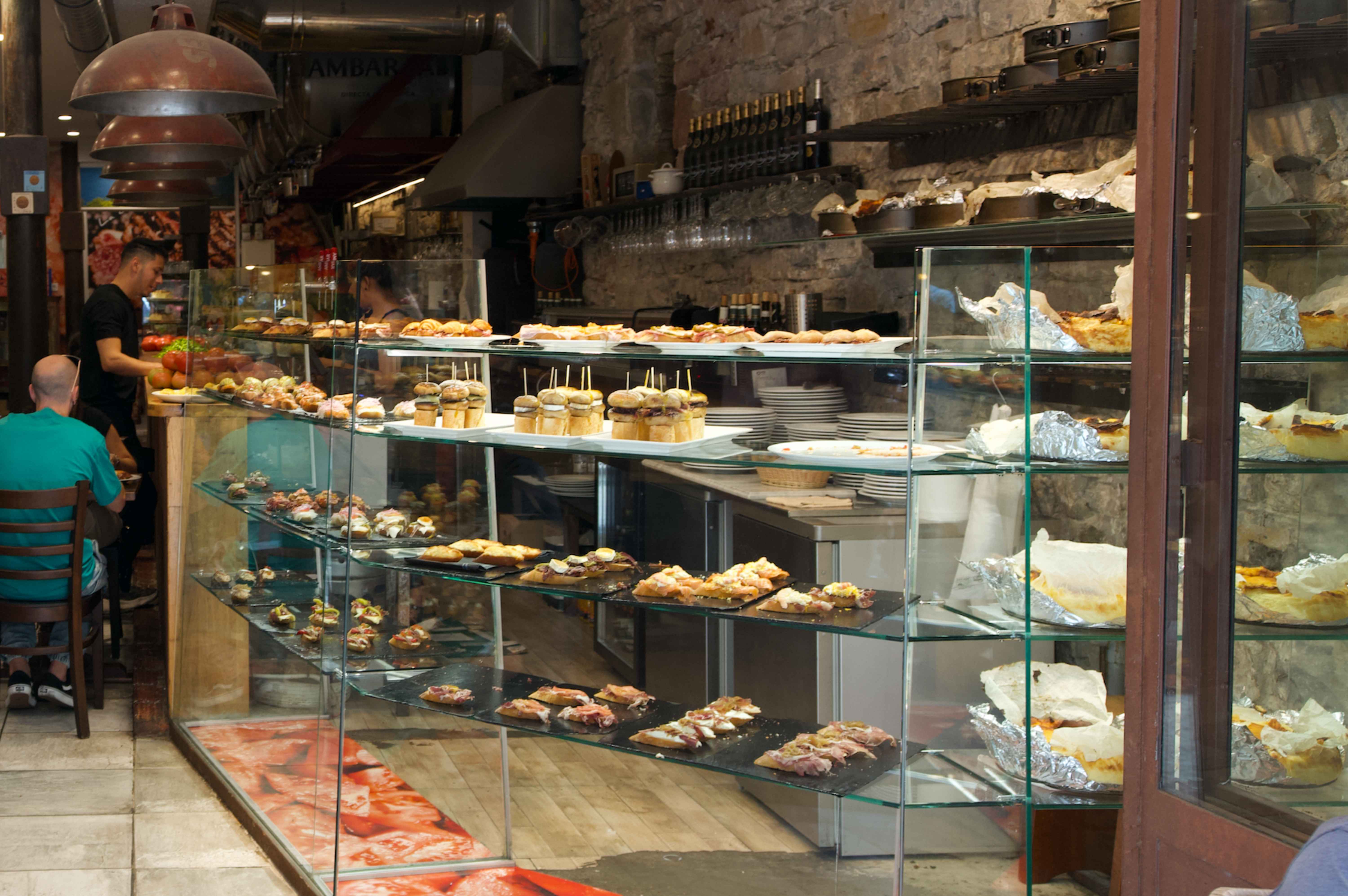
For example, in San Sebastián, there are 17 Michelin Stars with local and traditional flavors of the region. The gastronomy is very unique, and the city is a world reference in the area.
Do yourself a favor and look at my favorite pintxos of all times! What to Eat in Spain: 31 Tasty & Traditional Dishes
You’ve seen a lot, but it’s not nearly the half! Getting to know all the Spanish cities and hidden gems can take years!
But there’s always a first step. You can start your adventure on your next trip. Let me help you: 10 Days in Spain: The Best Itinerary to See Everything!



